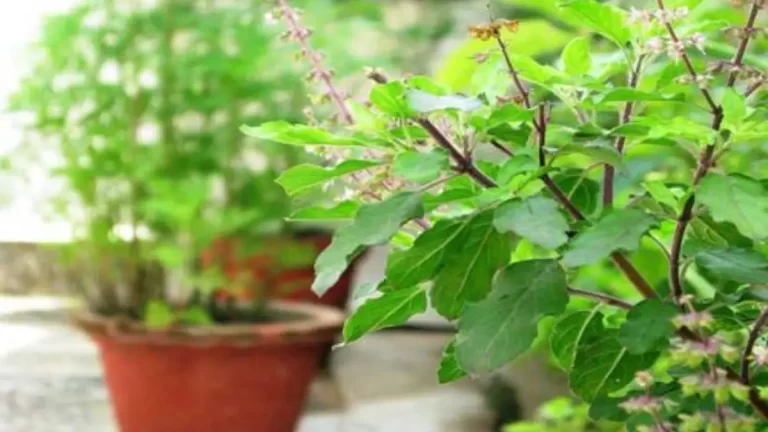How to Maintain a Tulsi Plant at Home: The Essential Guide

Tulsi, also known as Holy Basil, is more than just a plant; it’s a part of homes, cultures, and traditions in many parts of the world. Known for its medicinal properties and spiritual significance, the tulsi plant is a staple in many gardens. However, maintaining a healthy tulsi plant requires more than just a green thumb. It demands attention to detail and an understanding of its needs. Here’s how to ensure your tulsi not only survives but thrives in your home.
Introduction to Tulsi Care
Caring for Tulsi is akin to nurturing a piece of the natural world within your own home. It thrives in warm, sunny conditions and requires regular watering, but there’s more to Tulsi care than meets the eye.
1. Right Spot for Sunlight
Tulsi plants love the sun. Choose a spot where the plant receives at least 4-6 hours of direct sunlight daily. If you’re growing tulsi indoors, a south-facing window is ideal. However, in extremely hot climates, protect your tulsi from the harsh afternoon sun to prevent leaf scorch.
2. Watering Wisdom
Water your tulsi plant when the top inch of soil feels dry to the touch. Over-watering can lead to root rot, so it’s crucial to ensure good drainage. During hotter months, tulsi may need more frequent watering, while in winter, watering requirements decrease.
3. Soil and Fertilization
Tulsi prefers well-drained soil rich in organic matter. Use a mix of garden soil, compost, and perlite for optimal growth. Fertilize your tulsi plant every month with an organic fertilizer to nourish it without overwhelming it with chemicals.

TrustBasket Neem Cake Powder Organic Fertilizer and Pest Repellent for Plants (450 GMS)
Rs.165
Buy at Amazon4. Pruning and Harvesting
Regular pruning encourages bushier growth and prevents the plant from becoming leggy. Pinch off the tips of the branches as well as any flowers that appear, to encourage the plant to focus its energy on foliage production.
5. Pest Control
Tulsi can attract pests like aphids and spider mites. Keep an eye out for these pests and use natural remedies, such as neem oil, to keep them at bay without harming the plant.

6. Dealing with Diseases
Tulsi plants are relatively hardy but can be susceptible to fungal diseases if the conditions are too wet or humid. Ensure good air circulation around the plant and avoid overhead watering to minimize disease risk.
7. Winter Care
If you live in a region with cold winters, it’s essential to bring your tulsi indoors to protect it from frost. Keep it near a sunny window and reduce watering, but don’t let the soil completely dry out.
Conclusion: The Sacred Connection
Maintaining a tulsi plant goes beyond the physical care; it’s about fostering a connection with this sacred herb. By following these tips, you can ensure your tulsi plant remains a vibrant, healthy part of your home, offering its unique blend of spiritual serenity and natural beauty.
Engage with Your Tulsi
As you care for your tulsi, remember that it’s not just a plant but a living, breathing entity that can bring peace, health, and positivity to your home. Engage with it, nurture it, and it will surely return the favour manifold.
Caring for a tulsi plant is a rewarding experience that enhances your home’s environment and your well-being. With these tips, your tulsi will continue to thrive, bringing a touch of nature’s resilience and sacredness into your daily life.





Leave a Reply